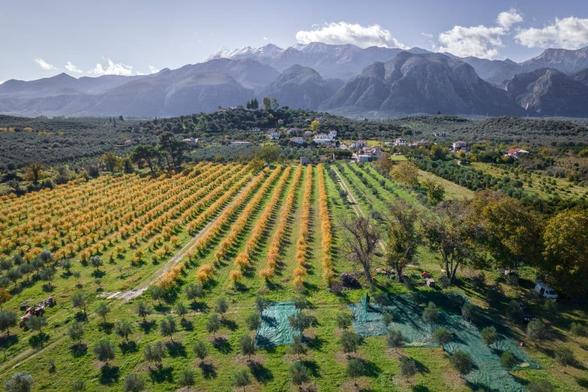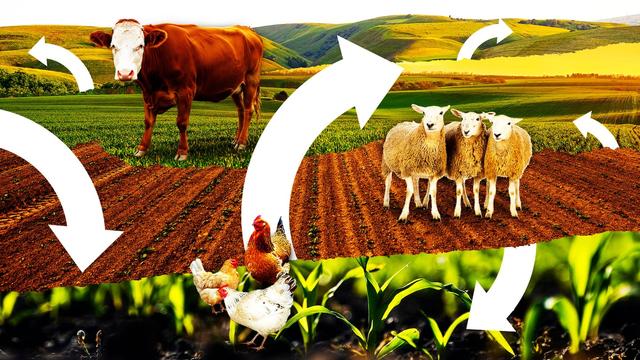"The root cause of the #outage was a configuration file"
I know I sound like a broken record, but having been responsible for preventing stuff like this from happening, I've learned to become very, very wary of anything having to do with configuration files/changes.
#resiliency #uptime #qa
https://arstechnica.com/tech-policy/2025/11/widespread-cloudflare-outage-blamed-on-mysterious-traffic-spike/
So, I had a dream last night that there was a big #SolarPunk conference being held in #MillinocketME (of all places). It was full of folks sharing all sorts of ideas, with the intention of building something bigger there. While I hate long trips, this one was worth it!
#SolarPunkSunday #HopePunk #Resiliency #BuildingCommunity #Maine
Tandem perovskite solar cells tested by the US DoD for resiliency against cyberattacks.
https://cleantechnica.com/2025/11/08/the-rise-of-perovskite-solar-cells-the-fall-of-fossil-fuels/
#solar #perovskitesolar #perovskite #solarcells #pv #nationalguard #usmilitary #resiliency #startups #innovation #affordablesolar #dod #defense #renewableenergy #energy #renewables #gogreen #goelectric
Tandem perovskite solar cells tested by the US DoD for resiliency against cyberattacks.
https://cleantechnica.com/2025/11/08/the-rise-of-perovskite-solar-cells-the-fall-of-fossil-fuels/
#solar #perovskitesolar #perovskite #solarcells #pv #nationalguard #usmilitary #resiliency #startups #innovation #affordablesolar #dod #defense #renewableenergy #energy #renewables #gogreen #goelectric
Why cities around the world are uniting to keep cool
A new global initiative is helping cities from #PhoenixAZ to #QuezonCity address #ExtremeHeat with #SharedSolutions and #LocalAction.
From the #C40 website: "Cities are focusing on increasing green cover, cool roofs, and shaded public areas in places that experience the most heat and the least access to adequate cooling."
Nov 05, 2025
"The following is a sponsored op-ed written by Kate Gallego, Mayor of Phoenix, Arizona and Joy Belmonte, Mayor of Quezon City, the #Philippines and sponsored by C40 Cities.
This summer, cities around the world broke temperature records once again. The results were devastating: Extreme heat now kills nearly half a million people each year, and the danger keeps rising. By 2050, the number of people in cities exposed to life-threatening heat is expected to increase fivefold.
From the desert of Phoenix in the United States to the humid streets of Quezon City in the Philippines, mayors are facing the same new reality: Heat is here to stay, and it is impacting every element of city life. That’s why we — along with more than 30 other mayors from C40 Cities, a global network of nearly 100 of the world’s biggest cities tackling the #ClimateEmergency — are joining forces to protect our people today and prepare our communities for a hotter tomorrow. Through the new C40 #CoolCities Accelerator, we’ll work together to speed up bold and inclusive #ClimateAction that meets the urgency of this growing threat.
In some ways, our cities couldn’t be more different. Phoenix, America’s fifth largest city, sits in Arizona’s Sonoran Desert, and sees more than 300 days of sunshine a year. Quezon City, the most populous city in the Philippines, faces sweltering humidity and the annual risk of typhoons. Yet both cities are on the front lines of rising temperatures that threaten health, strain our power grids, and deepen inequality.
Extreme heat is the deadliest climate hazard, but it’s also the quietest. It kills through heatstroke and dehydration, and by worsening heart and respiratory conditions. It’s often felt most by the people with the fewest resources to cope: older adults, children, outdoor workers, and low-income communities. In Phoenix, residents in low-income neighbourhoods can experience temperatures several degrees higher than in wealthier parts of the city. In Quezon City, densely populated neighborhoods can become dangerous heat traps.
We refuse to accept a future in which a heatwave becomes a death sentence for those with the least, and whose responsibility for the climate crisis is disproportionately small. The Cool Cities Accelerator is our shared plan to prevent that. In line with COP30’s call for a ‘decade of delivery,’ this provides a practical framework for mayors to act boldly and share what works.
First, we’re protecting lives right now. Participating cities are appointing heat leaders, improving early-warning systems, and coordinating emergency responses across agencies. Phoenix, for example, created the US’s first publicly-funded Office of Heat Response and Mitigation, expanded access to chilled water stations, and opened cooling and hydration stations, including overnight cooling center options to bring relief where it’s needed most. Meanwhile, Quezon City is currently mapping heat-vulnerable communities and developing a citywide heat-health action plan. It has already adjusted work hours for outdoor workers, and introduced heat-tolerant crops across more than 1,400 urban farms.
The goal is to build long-term resilience. Within five years, cities in the Accelerator will integrate cooling into building codes, redesign streets for shade and airflow, and expand tree canopies and green corridors. Phoenix is piloting reflective ‘cool pavements’, planting thousands of trees, and building artistic shade structures and setting regional standards for heat-ready infrastructure. Quezon City is restoring parks and greening schools and public spaces. As part of these efforts, the city has supported local groups turning vacant lots into small forests and gardens, while encouraging private development to adopt greener designs under its Green Building Ordinance. These efforts save lives, and cut energy bills while improving neighbourhoods.
But urban heat doesn’t stop at city limits, and neither should our solutions. That’s why collaboration is at the heart of the Cool Cities Accelerator. Thirty-two cities — from Austin to Athens and Singapore to Santiago — are now exchanging data and design ideas. The details on the ground obviously differ, but the solutions we craft together are remarkably similar, creating more shade, better design, and better care for the most vulnerable. When our teams share lessons on early-warning systems, or how to engage with our communities, we all move faster and more effectively.
For too long, extreme heat has been under-measured and under-estimated. We can build cities that are not only cooler, but more fair. But to do so, we must act together, and we must act now. We need to deliver solutions that both keep people alive today, and allow future generations to thrive."
Source:
https://grist.org/sponsored/why-cities-around-the-world-are-uniting-to-keep-cool/
More info about #C40:
https://www.c40.org/accelerators/cool-cities/
#SolarPunkSunday #ExtremeHeat #Resiliency #Cooling #Greenspace #GreenBuilding #GreenCorridors #HardeningInfrastructure #ClimateChange
The US Defense Department is eyeballing tandem perovskite solar cells to improve resiliency in case of cyberattacks, among other applications.
https://cleantechnica.com/2025/11/08/the-rise-of-perovskite-solar-cells-the-fall-of-fossil-fuels/
#solar #perovskitesolar #perovskite #solarcells #pv #nationalguard #usmilitary #resiliency #startups #innovation #affordablesolar #renewableenergy #energy #renewables #gogreen #goelectric
The US Defense Department is eyeballing tandem perovskite solar cells to improve resiliency in case of cyberattacks, among other applications.
https://cleantechnica.com/2025/11/08/the-rise-of-perovskite-solar-cells-the-fall-of-fossil-fuels/
#solar #perovskitesolar #perovskite #solarcells #pv #nationalguard #usmilitary #resiliency #startups #innovation #affordablesolar #renewableenergy #energy #renewables #gogreen #goelectric
#RegenerativeAgriculture Goes Mainstream
by Jan Lee Jul 10th 2025
"The world’s hottest year on record may also mark the beginning of the end for carbon-intensive, conventional farming. Several factors have converged to bring regenerative practices into the mainstream, while a new study demonstrates that farmers can produce just as much food while improving land productivity by transitioning away from conventional practices.
"#RegenerativeFarming first hit headlines as part of '#LivingSystemsThinking' in the 1960s, later gaining interest among health-conscious foodies when the concept was popularized by food author #MichaelPollan. Today, techniques such as #CoverCropping and integrated pest management are being embraced not only by #environmental activists but also by multinational food companies. The difference is that now, this approach is celebrated for its practical effectiveness in maintaining a consistent food supply in an era of #ClimateChange-driven supply shocks."
Read more:
https://earth.org/regenerative-agriculture-trends-and-impacts/
#FoodForAll #SolarPunkSunday
#Agroecology #RegenerativeFarming
#Intercropping #Polyculture #Resiliency #FoodSystems #ClimateChangeFarming
Take farming back to nature: #RegenerativeAgriculture means farmers work with the land, not against it.
By Brian CastnerUpdated September 28, 2025
Excerpt: "There is a growing community of people seeking to return wildlife to farms and our food supply — and none too soon, as our soil and bodies are in desperate need of a healthy upgrade.
"This movement operates under many names, but I prefer 'regenerative agriculture.' It’s the idea of working with natural systems, not against them, to grow healthier food and have a positive effect on the land. Regenerative agriculture practitioners consider ecosystems holistically and argue that our food system is more resilient and sustainable when farms are regarded as part of nature rather than separate. This may sound novel, but prophets like Wendell Berry have been writing about this for a long time; 'The Unsettling of America' was published in 1977.
"Our farm is in the foothills of the #Adirondacks, and the lion’s share of our land consists of slopes dedicated to pastures for grazing. We raise sheep and chickens, and when we move them across the land, we do so in ways that mimic the natural processes that produced the rich soil for the meadows in the first place. Rather than fence off one giant pasture and lock the animals in for the year, we set up many smaller paddocks and allow them to graze each spot only briefly. The sheep rotate to fresh grass three times a week. The chickens are moved even more often, twice a day. While each is in its allotted portion of pasture, the scene is one of intense eating — the lambs strip the fresh chicory and wild carrot of their leaves and tender stems. The chickens peck and scratch at the dirt, hunting for bugs. Wherever they move, they leave a path of destruction, trampling grass, devouring plants, and spreading their manure everywhere.
"But then the flock moves on, and we leave the pasture to rest. Beaten-down forage traps moisture and provides cover for fresh growth. Red and white clover pops through the netting of broken stems. Then the first shoots of timothy appear. In spring, thin-leafed plantains follow. In midsummer, it’s birds’-foot trefoil and wild carrot. In only a week or two the stems and grasses are up to my knees, and by the time the sheep return 60 days later, it’s once again a field of tall wildflowers, full of honeybees and cedar waxwings. I had never seen flocks of goldfinches (entire flocks!) until they took over my regrown pastures.
"Rotationally grazing livestock is much healthier for the animals as well. There are fewer respiratory issues, because they aren’t confined to a barn; they suffer from fewer parasites and diseases, because they are kept separate from their waste. Sheep especially are susceptible to worms that hatch in their manure and crawl up fresh shoots of grass. But by keeping them away until the worms complete their life cycle, we let the lambs stay healthy and avoid having to pump them full of antibiotics and dewormers. Happy, healthier animals make healthier food.
"This system of rotationally grazing — concentrating the flock or herd and moving it through the land and on to fresh grass — mimics animals in the wild.
Across North America, massive herds of bison and smaller groups of deer and elk once moved across the land, eating as they went. They took the energy from the plants and left behind manure and stomped grass. With their hooves, they opened and aerated the compacted soil, where a complex ecosystem of roots and rhizosheaths and bacteria could thrive.
"The term to describe this process is 'animal impact.' The idea that soil can be made healthier by putting animals on it and then removing them, leaving behind a more resilient ecosystem, is counterintuitive if you think of animals only as either messy or destructive, or consider their poop as stuff to be cleaned up rather than a resource to be used.
"Working this way requires a change in thinking, a new philosophy in farming. Our greatest asset is not our barns or equipment or even the animals. These are all easily replaceable, if occasionally expensive. No, our greatest agricultural asset is the soil, and so all of our decisions about how to manage our land should be about what’s best for the soil and by extension the pastures.
"Regenerative agriculture at scale is challenging, as our food supply system forces farmers to maintain a relentless focus on the economic bottom line, encouraging chemical-laden shortcuts. But on small farms, it is possible to work with the land, not against it. We named our venture du Trieux Farm, after my wife’s ancestors who settled in the Hudson Valley four hundred years ago, and this kind of long-term thinking informs how we operate. The land we now care for has been continuously farmed for two hundred and fifty years. One might expect that the soil would be degraded after all that time, but it need not be. We seek to add to the soil, rather than extract from it."
Read more:
https://www.bostonglobe.com/2025/09/28/opinion/regenerative-agriculture-nature-brian-castner/
Archived version:
https://archive.ph/lX9SR
#SolarPunkSunday #RegenerativeAgriculture #RegenerativeFarming #RestorativeAgriculture #Resiliency #FoodSystems





